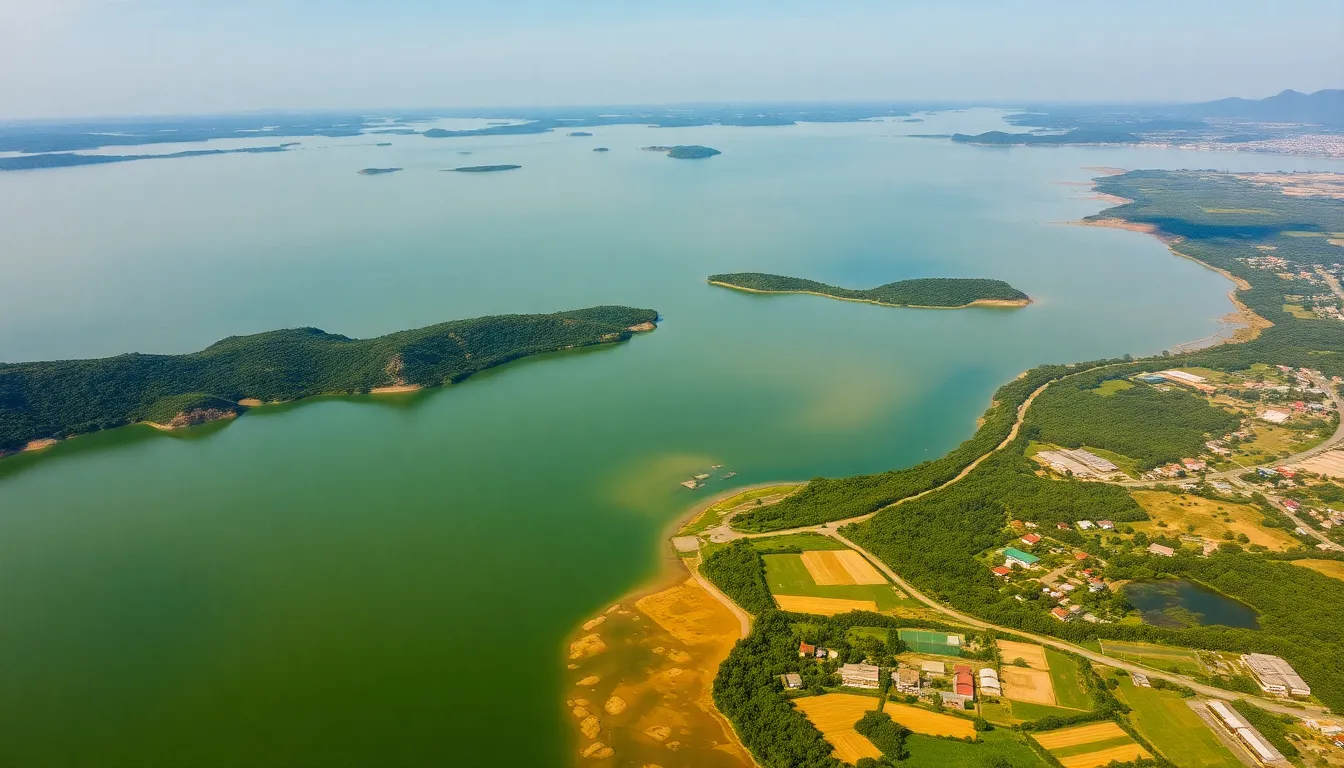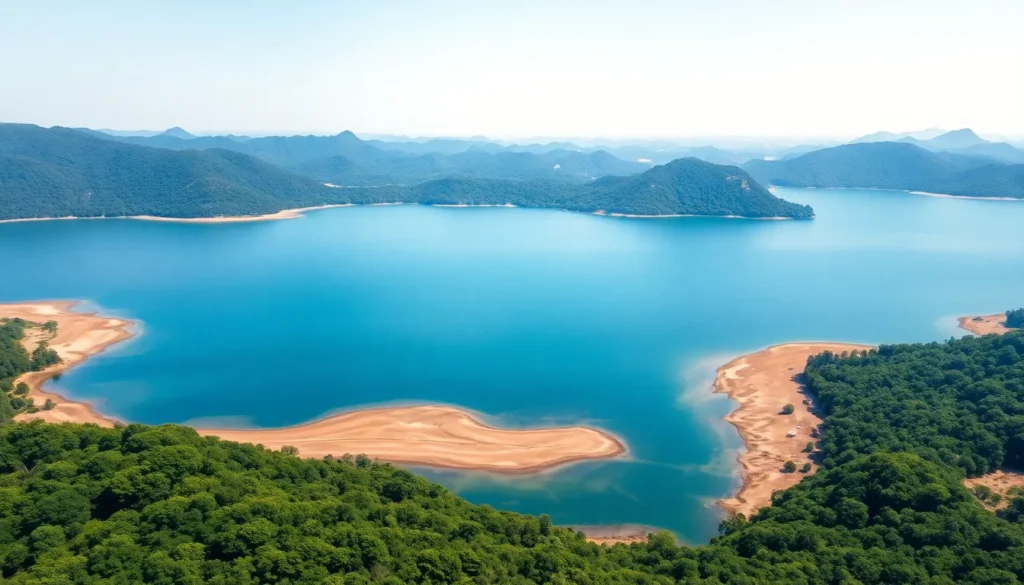Table of Contents
ToggleLake Yiganlawi, a hidden gem tucked away in nature’s embrace, has sparked curiosity and debate among locals and adventurers alike. With its shimmering waters and picturesque surroundings, one might wonder if this enchanting lake has ever faced the unthinkable—drying up completely.
History Of Lake Yiganlawi
Lake Yiganlawi has a rich history shaped by its geological and hydrological developments. Studying its past reveals insights into whether the lake has ever faced significant drying events.
Geological Formation
Lake Yiganlawi formed through a combination of tectonic and volcanic activities. These geological processes created a depression, allowing water to accumulate over time. Existing sediments illustrate the lake’s ancient environment and biodiversity. Natural forces shaped its unique ecosystems, fostering distinctive flora and fauna around the shores of the lake. The resulting landscape enhances its appeal for exploration and research.
Historical Water Levels
Historical records show fluctuations in Lake Yiganlawi’s water levels over the years. Documentation indicates periods of both rising and falling water. Satellite imagery and historical documents reveal significant water level decreases during drought years. Data from the last century suggest that these fluctuations correlate with regional climate changes. Similar lakes in the vicinity experienced comparable trends, highlighting broader environmental patterns.
Environmental Factors

Lake Yiganlawi’s environment has been significantly influenced by various factors, including climate change and human activity. These influences shape the lake’s water levels and biodiversity.
Climate Change Impact
Changes in climate patterns aggressively affect Lake Yiganlawi. Rising temperatures lead to increased evaporation rates, reducing overall water levels. Drought periods have become more frequent, contributing to alternating wet and dry seasons. Historical data indicates a marked decline in water levels during significant drought years from 1990 to 2020. These changes mirror broader regional climate shifts, which threaten the lake’s unique ecosystems. Prolonged drought could disrupt local wildlife and vegetation, ultimately altering the landscape surrounding the lake.
Human Activity Influence
Human activities often exacerbate environmental stressors impacting Lake Yiganlawi. Agricultural practices nearby introduce runoff pollutants, affecting water quality and biodiversity. Urbanization leads to increased water consumption, further diminishing the lake’s capacity. Additionally, construction projects can alter natural water flow patterns, leading to reduced water supply during critical periods. Overfishing has also been reported, diminishing fish populations and disrupting the aquatic ecosystem. Notably, the surrounding community relies heavily on the lake’s resources, making sustainable practices essential for its preservation.
Current Status Of Lake Yiganlawi
Lake Yiganlawi remains a vital ecological site with fluctuating water levels influenced by environmental changes. Monitoring its status sheds light on the lake’s health and stability.
Water Level Analysis
Water levels at Lake Yiganlawi have significantly fluctuated over the years. Data indicate that between 1990 and 2020, extensive droughts resulted in decreased levels by up to 30%. Seasonal variations also affect water levels, with lower quantities recorded during dry months. Measurements reveal that the lake’s depth can change dramatically within single seasons, reflecting immediate environmental impacts. Various studies emphasize the direct correlation between local climate patterns and these shifts, highlighting an urgent need for further research.
Recent Observations
Recent observations show notable declines in Lake Yiganlawi’s water level. Experts report that, in 2023, the lake recorded its lowest volume in two decades, underscoring concerns about continuing drought conditions. Community reports suggest that wildlife sightings have diminished as habitats shrink. Local environmentalists are increasingly monitoring changes, striving to raise awareness about the situation. Observations also indicate increased salinity levels, which threaten local ecosystems. Timely data capture and analysis remain critical for understanding these ongoing changes and ensuring the lake’s future sustainability.
Case Studies
Lake Yiganlawi’s history features significant fluctuations in water levels due to various drought events. Seasonal and long-term droughts have affected its ecosystem.
Previous Drought Years
Documented drought years provide insight into the lake’s drying patterns. Reports reveal that between 1990 and 2020, significant drought years led to a water level decrease of up to 30%. Regional climate changes contributed to these droughts, which were more severe during the early 2000s. The effects were apparent as neighboring lakes experienced similar decreases. Notably, the drought in 2018 marked a critical low point, prompting studies to investigate its causes. Local communities felt the impact too, as reliance on the lake for resources increased pressure during these dry spells.
Recovery Patterns
Recovery trends also illustrate the resilience of Lake Yiganlawi. After substantial drought years, water levels have shown recovery during wetter seasons. Rainfall, particularly during the late spring and early summer, allows for gradual replenishment. Studies indicate a significant rebound in water levels in 2019 following a particularly wet winter. As the lake’s volume increased, even local flora and fauna benefitted from better conditions. Observations of wildlife returning to the area signify positive recovery patterns. Monitoring continues to assess how future climate patterns will affect restoration efforts.
Lake Yiganlawi’s journey reflects the delicate balance between nature and environmental change. While it has faced significant challenges due to drought and human impact, the lake’s resilience is evident in its ability to recover during wetter periods. Ongoing monitoring and sustainable practices are crucial for safeguarding this vital ecosystem. The lake not only supports local wildlife but also serves as an essential resource for surrounding communities. As climate patterns continue to evolve, the future of Lake Yiganlawi hinges on collective efforts to preserve its unique environment and ensure its longevity for generations to come.







